OSD Audio SMP250 Owner's manual
- Category
- Supplementary music equipment
- Type
- Owner's manual
This manual is also suitable for

2
IMPORTANT SAFETY INSTRUCTIONS
1) Read these instructions.z
2) Keep these instructions.
3) Heed all warnings.
4) Follow all instructions.
5) Do not use this apparatus near water.
6) Clean only with dry cloth.
7) Do not block any ventilation openings. Install in accordance with the manufacture’s instructions.
8) Do not install near any heat sources such as radiators, heat registers, stoves, or other apparatus
(including amplifiers) that produce heat.
9) Do not defeat the safety purpose of the polarized or grounding-type plug. A polarized plug has two
blades with one wider than the other. A grounding type plug has two blades and a third grounding
prong. The wide blade or the third prong are provided for your safety. If the provided plug does not
fit into your outlet, consult an electrician for replacement of the obsolete outlet.
10) Protect the power cord from being walked on or pinched particularly at plugs, convenience
receptacles, and the point where they exit from the apparatus.
11) Only use attachments/accessories specified by the manufacturer.
12) Use only with the cart, stand, tripod, bracket, or table specified by the manufacturer, or sold with
the apparatus. When a cart is used, use caution when moving the cart/apparatus combination to
avoid injury from tip-over.
13) Unplug this apparatus during lightning storms or when unused for long periods of time.
14) Refer all serving to qualified service personnel. Servicing is required when the apparatus has been
damaged in any way, such as power-supply cord or plug is damaged, liquid has been spilled or
objects have fallen into the apparatus has been exposed to rain or moisture, does not operate
normally, or has been dropped.
PDF created with pdfFactory Pro trial version www.pdffactory.com

3
The symbol in figure 17 shall be shown be shown adjacent to the text of item 12 above.
To reduce the risk of fire or electric shock, do not expose this apparatus to rain or moisture.
15) Warning to reduce the risk of fire or electric shock, do not expose this apparatus to rain or moisture.
16) Warning: the mains plug or an appliance coupler is used as the disconnect device, the disconnect
device shall remain readily operable.
17) Do not block any ventilation openings. Leave an open space around the equipment. Never place the
equipment on a bed, sofa, rug, or any other similar surface. Do not place apparatus to close to
drapes/curtains/walls, or in a bookcase, build-in cabinet, or any other similar places that may cause
poor ventilation.
18) The apparatus should be connected to a mains socket outlet with protective earthing connection.
19) The user should not attempt to service the appliance beyond those means described in the operation
instruction. All other servicing should be referenced to qualified.
Warning: These class I apparatus shall be connected to a mains socket outlet with a protective earthing
connection.
Caution: only make connection when the amplifier is turned off.
There two output terminals on the back of the amplifier, one positive and on negative. There
are three ways to binding post output terminals allow for a variety of ways to connect our subwoofer
wiring to the amplifier, include stripped wire, spade connectors, etc. You must use a minimum of
14-gauge speaker wire. Be sure all connections are solid.
Congratulations on your purchase of the subwoofer amplifier! The subwoofer amp will provide the excellent
performance and reliability. To receive the best performance from your amp, please carefully read the
instructions in this manual.
PLACEMENT
DO:
l Place the amplifier with the feet resting on a solid flat level surface.
l Place the amplifier in a well-vented area to provide proper cooling. In areas that lack proper
ventilation, such as tight cabinets or racks, it may be necessary to install small fans to create air
movement.
DON’T:
l Don’t block the ventilation holes on the top or bottom of the amplifier. Never place it on carpeting
or similar material.
l Don’t place the amplifier in any other position other than horizontal with the feet down. Never
PDF created with pdfFactory Pro trial version www.pdffactory.com

4
place on its side or resting on the back where the terminals are located.
l Don’t place the amplifier near heat sources, or in an area that it would be exposed to moisture or
excessive humidity.
YOU SHOULD KNOW
l The power supply may cause a hum to be heard in some components if they are placed very close
to the amplifier.
Installation
Please use Diagram 1 to familiarize yourself with the rear panel of subwoofer.
DIAGRAM 1
Subwoofer Rear Panel
INSTALLATION (continued)
1. Connecting the Subwoofer to the Amplifier
CAUTION: Only make connections when the amplifier is turned off.
There are 2 output terminals on the back of the amplifier, one positive and one negative(see diagram 1). These
3-way binding post output terminals allow for a variety of ways to connect your subwoofer wiring to the amplifier,
including stripped wire, spade con-nectors, etc. You MUST use a minimum of 14 gauge speaker wire. Be sure all
connections are solid.
2. Connecting the Audio Inputs
CAUTION: To avoid possible damage to the amplifier or subwoofer, only make connections when the amplifier is
turned off.
.LFE (Low Frequency Effects) Input – If your preamplifier or receiver has a Sub Out or LFE out, you can connect it to the
LFE input. Be aware that using the LFE input bypasses the amplifier’s adjustable low frequency (low pass) crossover.
.Line Level Inputs (Left & Right) –The line outputs from a preamplifier or receiver can be connected to the line level inputs
of the Bass power with RCA cables. If the line level signal is also required by other equipment, you can con-nect the line level
PDF created with pdfFactory Pro trial version www.pdffactory.com

5
outs to another device. (See the Line Lever Outputs section below.)
.Speaker Lever Inputs (Left & Right) – These inputs can be used if your receiver does not have a subwoofer output or a set of
line output jacks. Being sure to observe proper polarity, connect the left and right pair of main speaker output wires from your
amplifier or receiver to the speaker level input terminals of the Bass Power amplifier. Then connect a left and right pair of
speaker wires from the Bass Power speaker level output to your main speaker terminals. (See Speaker Level Output section
below)
3. Connecting the Audio Outputs (optional)
.Line Level Outputs (Left & Right) – Sources connected to the line level inputs can be forwarded to other receivers or
amplifiers line level inputs. By doing this you can pass-on the audio signal for use by another component. Connect RCA cables
to the line lever output sections of the Bass Power and the Line level inputs of a receiver or amplifier.
.Speaker Level Outputs (Left & Right ) –Connect a left and right pair of speaker wires from the Bass Power speaker outputs
terminals to your main speakers. The main speakers will still be powered by your system’s receiver or amplifier.
4. Dual Voltage Switch (See Diagram 2)
For use in the U.S., the Bass Power cones preset from the factory at 115V. For use in other countries, the voltage switch may
need to be changed to 230V. (Please note that a plug adapter or alternate power cord may be required.)
DIAGRAM 2
Dual Voltage Switch
4. Connecting the AC Power
Plug the socket of the supplied AC cord into the receptacle on the rear of the amplifier. Plug the 3-prong plug
directly into a wall outlet. If you wish to plug the amplifier into a preamplifier or receiver’s switched outlet, make
sure it is rated at least 600watts. However, it is always safer to plug the Bass Power directly into an AC outlet.
AMPLIFIER OPERATION
Please use Diagrams 1&3 to familiarize yourself with the front and rear panels of the subwoofer Power.
CAUTION: please read all the following instructions to prevent causing damage to your system.
Front Panel Controls
Power Switch
The switch marked “power” on the front panel of the amplifier will turn off all amplifier circuitry including Auto
sense circuitry.
l Volume Controls
Use this to match the output level of the subwoofer to that of the main speakers in the system. We recommend that
you play a variety of material before selecting a setting. Start with the control turned completely counterclockwise
(off) and slowly turn it up. NOTE: Turning the volume up slowly will prevent possible damage to the woofer from
PDF created with pdfFactory Pro trial version www.pdffactory.com

6
the system being run too “hot”. Very little movement of the knob is needed.
CAU T I ON: if a popping sound (clipping) is audible through the subwoofer, it is being over drive, reduce
the volume of the amplifier, or speaker damage may occur! (See Volume L imit Control for proper
adjustment of volume settings to avoid distortion damage.)
L ow Pass Filter
Use this control to adjust the upper frequency limit of the subwoofer Power. T he purpose is to control the overlap of
the subwoofer Power’s upper frequencies and the main speaker’s lower frequencies. If adjust well, this allow
seamless blending of the subwoofer with the speakers.
Phase C ontrol
T his control allows you to match the arrival times of the sound waves of the B ass Power and the
main speakers to your listening area. While the system is playing, flip th
e switch to the 180! and
back to 0! until the bass sounds louder or less boomy. Depending on the subwoofer placement and
room acoustics, this control may have little or no effect.
DI AG RA M 3
Subwoofer front panel
" R ear Panel C ontrol
.Volume L imit C ontrol
Use this control to adjust the maximum volume setting for your subwoofer power system. With the level
control and front panel volume control turned all the way down (counterclockwise), turn on the subwoofer
and start playing audio through your system.
T R OUBLE SH OOT I NG
T he B ass Power Subwoofer System is designed to function trouble-free. Most problems occur because of
operating errors. If you have a problem, please check the troubleshooting list first. If the problem persists,
contact Tech Support at or e-mail us at
T he pr oblem Possible C auses and Solutions
No sound is heard. Audio to the amplifier is not connected properly. Check this and other system component
manuals to be sure of proper connections.
The cable is bad. Use another cable that you know is good.
L oose or frayed wires. Check for solid, clean connections on all speaker wire terminals.
Volume L imit Control is set too low. See Volume L imit Control for adjustment procedure.
A hum or buzzing sound is heard. The sound may be caused by a ground loop in the system. Try to eliminate this by revers-
ing the AC plugs of other components in the system.
Try plugging the amplifier into another outlet.
Other causes may include faulty cables.
PDF created with pdfFactory Pro trial version www.pdffactory.com
1-562-697-2600
Support@osdaudio.com.

7
The amplifier will not turn on. There may be AC power problems. Check the AC circuit and plugs. Be sure the power
switch is turned on.
Audio cable to the amplifier is not connected properly. Check this and other system
component manuals to be sure of proper connections.
The cable is bad. Use another cable that you know is good.
L oose or frayed wires. Check for solid, clean connections on all speaker
wire terminals.
The Protection Circuit cuts in
momentarily and then returns to normal.
The circuitry in the amplifier has detected that the amplifier is in danger of overheating.
Normally, this would happen infrequently and momentarily. If is persists, the amplifier
may need to have more adequate ventilation.
The Protection Circuit cuts in and does
not return to normal.
There may be a fault in the wiring, the speaker, or the amplifier. Turn the power switch
o and then on again. If the amplifier immediately returns to the protection mode, turn it
o and check all of the wiring, including all connections at the amplifier, at the
subwoofer, and any connections made to the terminals on a wall plate.
SPE CIFICAT IONS
Type: Mono ClassAB dedicated subwoofer amplifier
Power Output: 150 watts
Crossover: Variable L ow Pass Crossover 35 Hz to 180Hz
Auto Off Time: 20 minutes
Auto On Sensitivity: 5 mV
In our attempt to constantly improve our products,features and specifications are subject to chang without notice.
PDF created with pdfFactory Pro trial version www.pdffactory.com
14” x 17 1/4” x 4” (356mm x 437mm x 102mm)
Dimensions D*W*H
-
 1
1
-
 2
2
-
 3
3
-
 4
4
-
 5
5
-
 6
6
-
 7
7
OSD Audio SMP250 Owner's manual
- Category
- Supplementary music equipment
- Type
- Owner's manual
- This manual is also suitable for
Ask a question and I''ll find the answer in the document
Finding information in a document is now easier with AI
Related papers
Other documents
-
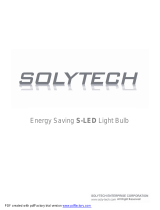 Supercase S-LED6140D27 Datasheet
Supercase S-LED6140D27 Datasheet
-
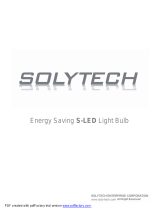 Supercase S-LED6140W27 Datasheet
Supercase S-LED6140W27 Datasheet
-
Proficient Audio Systems M3 Mono Amplifier Owner's manual
-
Proficient Audio Systems M3 Owner's manual
-
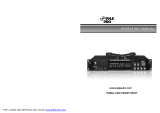 PYLE Audio PWMA3003T User manual
PYLE Audio PWMA3003T User manual
-
PylePro PRO P1001AT User manual
-
Soundstream LIL' WONDER II LW5.830 Owner's Manual And Installation Manual
-
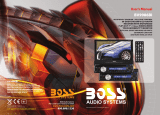 Boss Audio Systems DVD/CD AM/FM Receiver User manual
Boss Audio Systems DVD/CD AM/FM Receiver User manual
-
Naxa NCD-691 Owner's manual
-
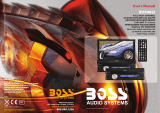 Boss Audio Systems BV9982I User manual
Boss Audio Systems BV9982I User manual












